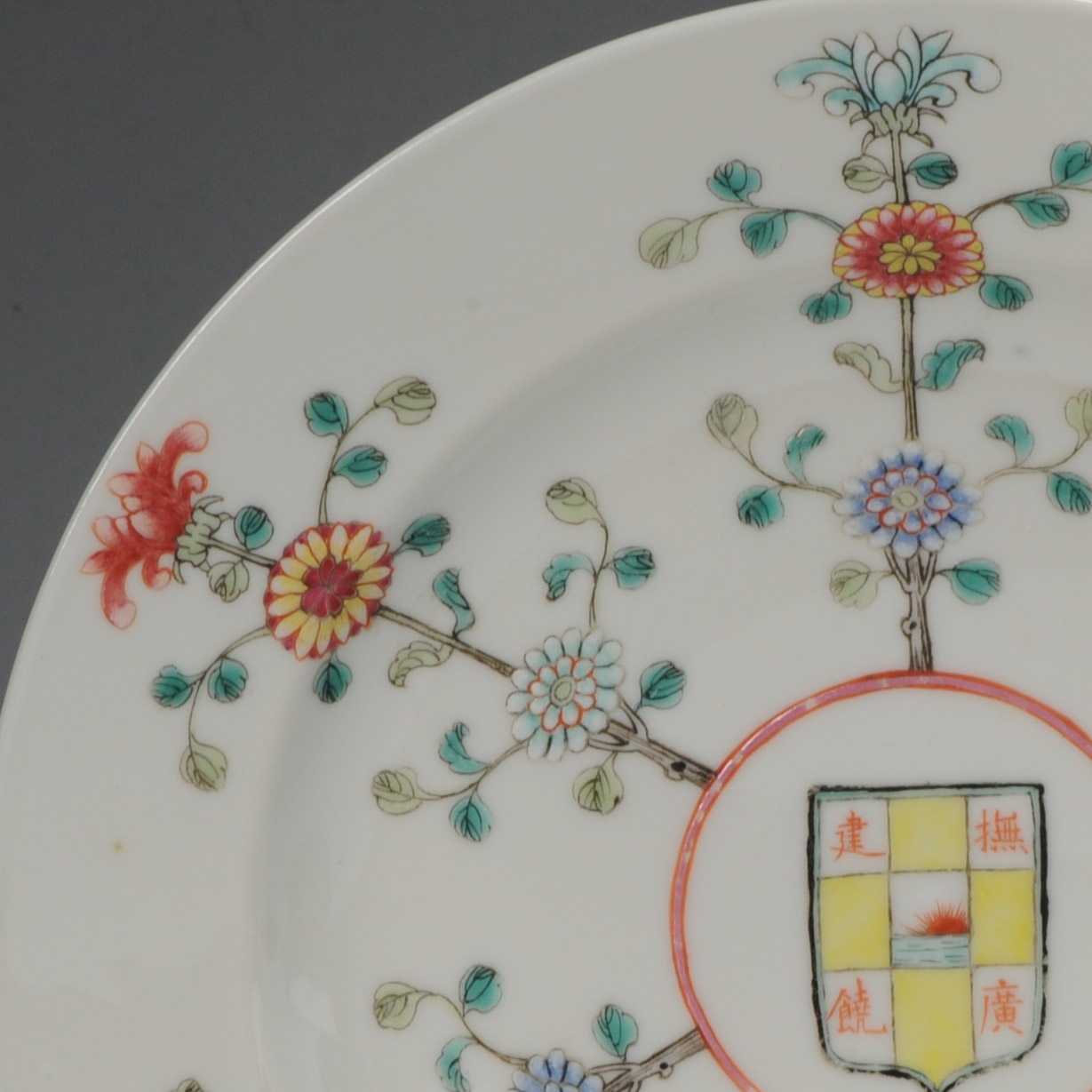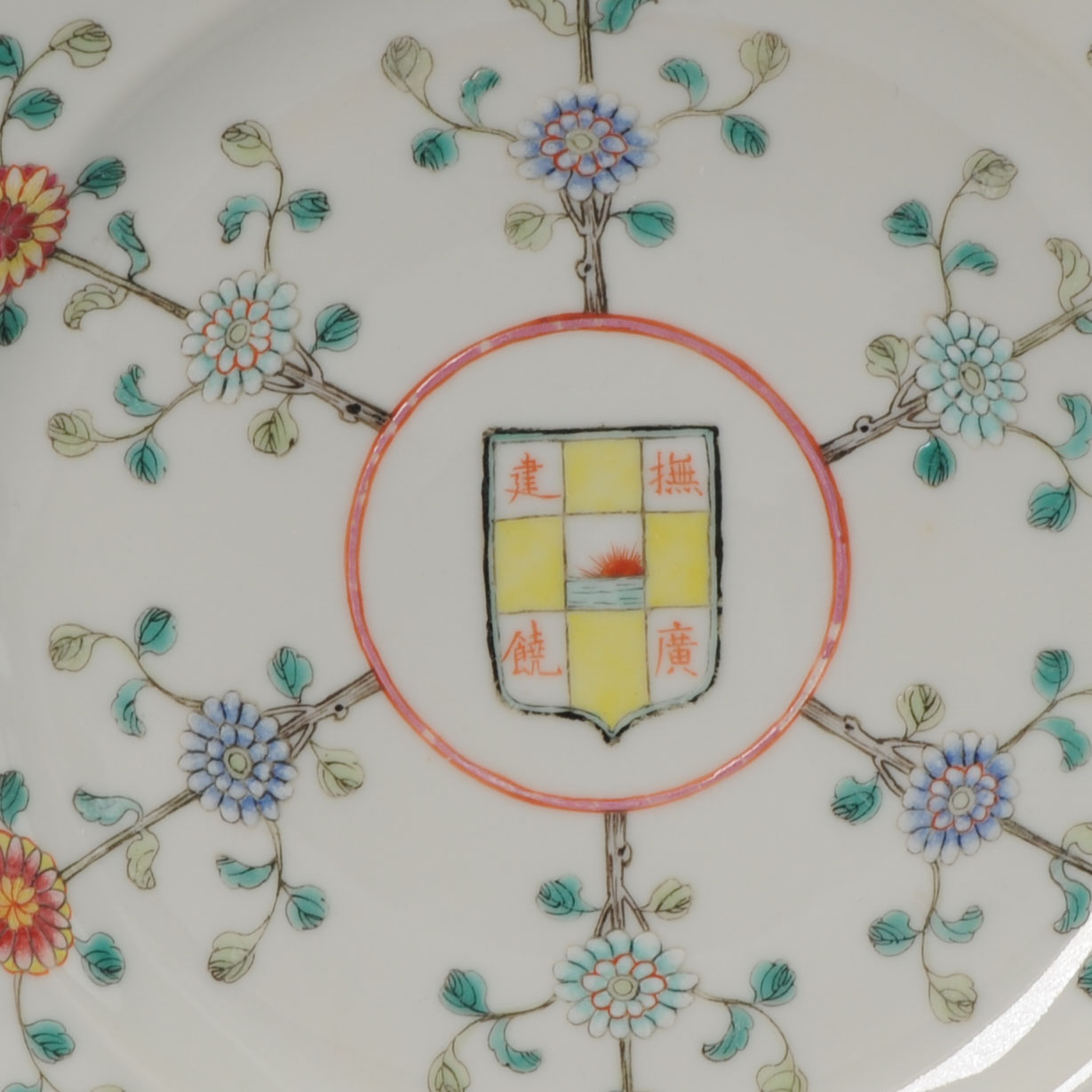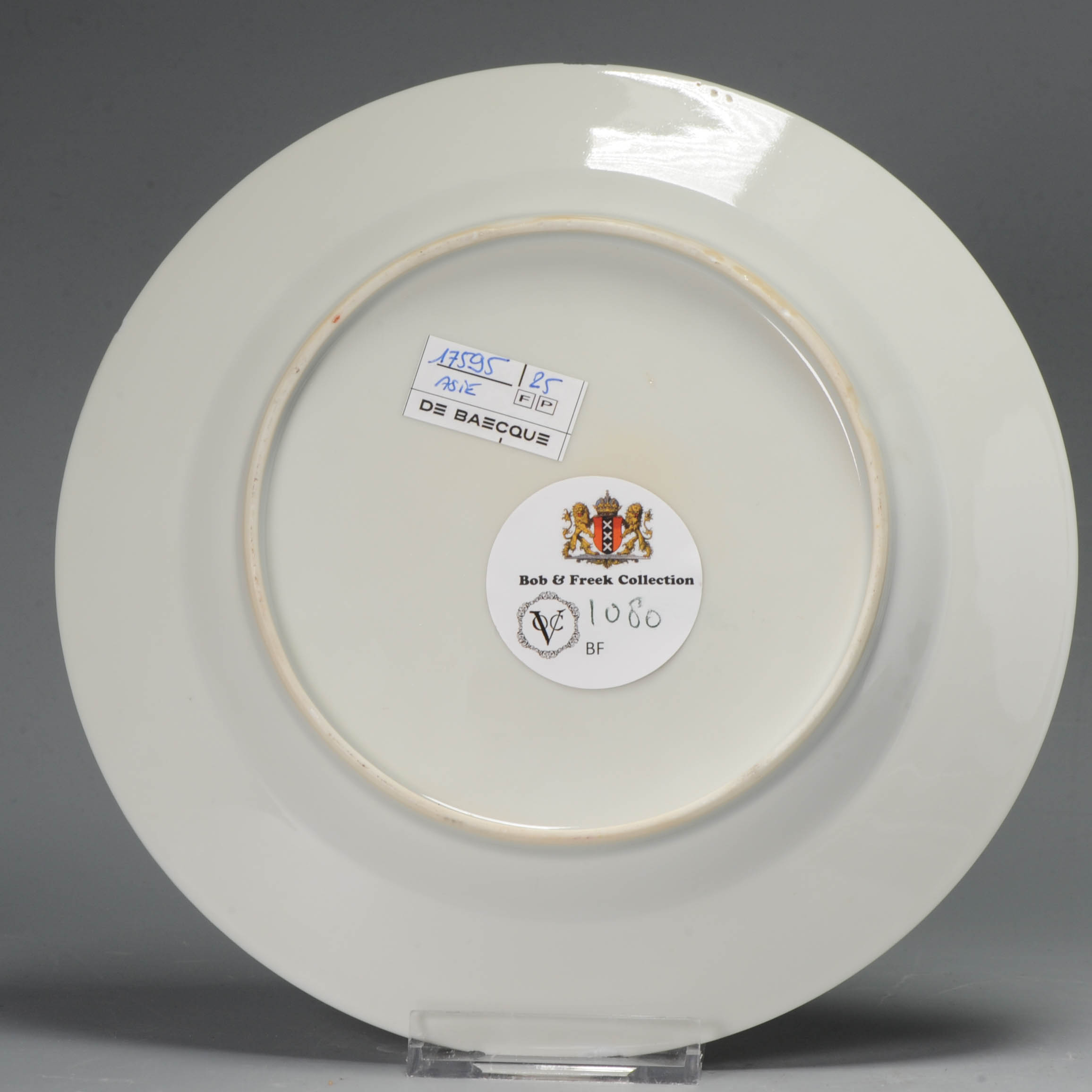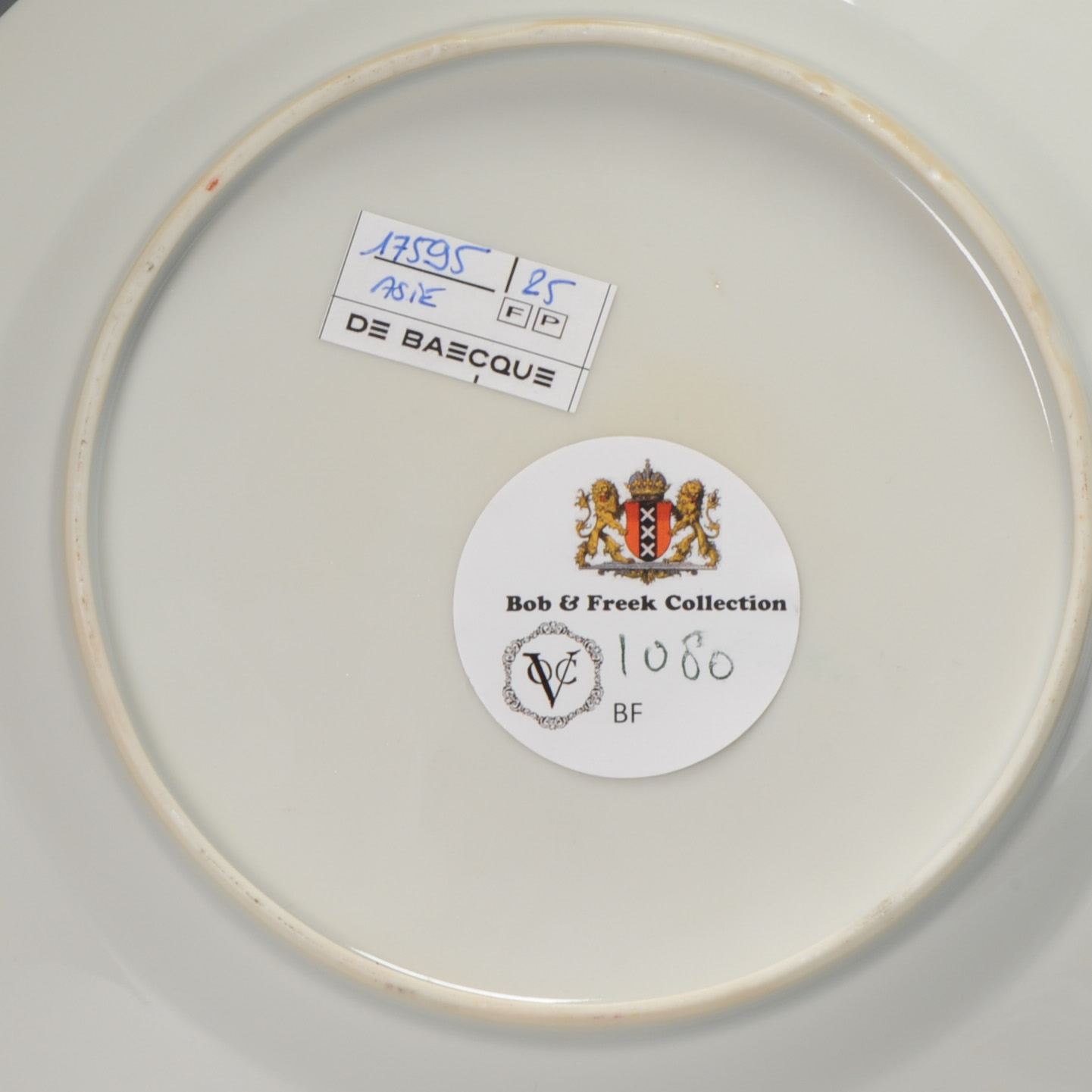1080 Lovely Guangxu/Xuantong period dish, unmarked at the base. Fu-Jian-Guang-Rao-Nan-Jiu Dao
Description:
1080 Lovely Guangxu/Xuantong period dish, unmarked at the base. Fu-Jian-Guang-Rao-Nan-Jiu Dao
Quality with flowers and central a shield with characters and central a rising sun.
According to the study of a friend, the dishes were a special order from a government in Jiang-Xi Province. The official name of the government agency was called “Fu-Jian-Guang-Rao-Nan-Jiu Dao”, and this “Dao” administered a total of six cities from 1908 to 1911 in the period from late Guangxu to Xuan-Tong Emperor of Qing Dynasty (1908-1911). The Dao governed six cities, including Fu-Zhou, Jian-Chang, Guang-Xin, Rao-Zhou, Nan-Kang, and Jiu-Jiang. Taking the city of Rao-Zhou as an example, it governed many counties, one of which administered the world-renowned Jing-De-Zhen. The abbreviated names of the four most prominent cities were highlighted in the central section of the dish, i.e., the armorial. This type of government ordered porcelains are unique, interesting and important documentary artifacts with both artistic and historical values. Although it was not made for the imperial court, it is very close in both quality and rarity as it was a special order from a government agency at that time.
The four Chinese characters in the center of the dish provided very important clues. Fu (抚)refers to the city of Fu-Zhou (抚州). Jian (建)refers to the city of Jian-Chang (建昌). These two cities used to be administered by Nan-Fu-Jian Dao. However, after Nan-Fu-Jian Dao was removed in 1908, which was the very late period of Guangxu emperor, those two cities were merged under the administration of the former Guang-Rao-Nan-Jiu Dao, which later became a newly reorganized administration of Fu-Jian-Guang-Rao-Nan-Jiu Dao. The third character in the dish is Guang (广), which stands for the city of Guang-xin (广信). And the fourth character in the center of the dish is Rao (饶), which stands for the city of Rao-Zhou (饶州), governing the world’s capital of porcelain Jin-De-Zhen (景德镇). The Fu-Jian-Guang-Rao-Nan-Jim Dao lasted until 1911. As the Republic of China took over the power in 1912, this Dao was removed right away.
Age: eaely 20th c
Diameter: 21.1 diameter
Additional Information
| Type | |
|---|---|
| Region of origin | China |
| China dynasty period | Qing (1661 – 1912) |
| Decoration type colour | Mandarin, Polychrome |
| Emperor | Guangxu (1875-1908), Xuantong (1908-1912) |
| Size | 21cm-22cm |
| Century | 20th century |




